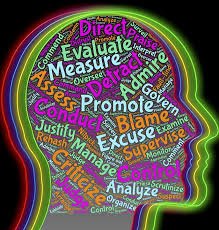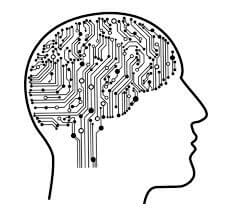The post Learn programs that make your life easier with Magnimind Academy appeared first on Magnimind Academy.
]]>Key reasons to join Magnimind Academy
![]()
First of all, data scientists need solid skills in programming, statistics, and computer science. Regardless of your major, you’ve to focus on the courses that would help you develop a solid understanding of these. For instance, Python – the full-fledged programming language is a perfect fit when it comes to implementing algorithms. Almost every newer data scientist gravitates toward this language because of its simplicity and ease of use. It also offers a programming platform which comes with high compatibility with data science, machine learning, and many other emerging technologies. In short, Python won’t let you bog down with complex programming requirements by allowing you perform tasks in a hassle-free manner. If you’re new to this language, the Data Analysis with Python mini bootcamp should be the perfect course for you while the Introduction to Python mini bootcamp would be ideal for students who’ve got some fundamental understanding of Python.
Next comes SQL or Structured Query Language which is considered to be one of the most sought-after skills in data science, together with Python and R. One of the key advantages of SQL is that when you’re working with data, it’s directly accessed and that speeds up workflow executions considerably. From a data science viewpoint, SQL can be used for both machine learning and data pre-processing purposes. If you’re interested in obtaining more knowledge about the language, we’d strongly suggest you to join the SQL for Data Science mini bootcamp offered by Magnimind.
Lastly but perhaps the biggest reason of joining Magnimind is its offering of completely immersive training programs in form of bootcamps. They’ve designed these training programs for students coming from a diverse range of technical backgrounds. To excel in their field, data scientists must need a variety of tricks and tools to process Big Data and their bootcamp is fully focused on the details. The concepts supporting various technologies are greatly explained by the instructors while allowing students to obtain valuable, hands-on experience. And when it comes to career preparation, Magnimind places a great emphasis on it, including job interviews and hiring fairs. And the best part is their data science bootcamp in Silicon Valley fully embodies the techno-meritocracy spirit of the technology hub, where anybody with a love of data science can hack his/her way to competency.
. . .
To learn more about data science, click here and read our another article.
The post Learn programs that make your life easier with Magnimind Academy appeared first on Magnimind Academy.
]]>The post A Simple Introduction to Natural Language Processing appeared first on Magnimind Academy.
]]>While natural language processing has been around for a long time, the emergence of big data together with the availability of enhanced algorithms and powerful computing, the technology is experiencing rapid advancements in recent years.
1- Components of natural language processing
![]()
Natural language processing comprises two components namely NLU (natural language understanding) and NLG (natural language generation). In NLU, the given input in natural language is mapped into useful representations and different aspects of the language are analyzed. NLG involves tasks like text planning, sentence planning, and text realization.
2- Steps in natural language processing
![]()
In general, there’re five steps involved in natural language processing namely Lexical Analysis (involves identifying, as well as, analyzing words’ structure), Syntactic Analysis (involves grammatical analysis of words and arranging them in manner which shows the relationship among them), Semantic Analysis (involves drawing of the dictionary meaning or the exact meaning from the text), Disclosure Integration (the meaning of a sentence may depend on the sentences which precede it and may influence the sentences’ meanings which follow it), and Pragmatic Analysis (here, the structure that represents what was said gets reinterpreted to determine what was meant actually).
3- Common applications of natural language processing
![]()
Natural language processing is the key technology behind a lot of things you may often take for granted. Here’re some common applications of the technology.
- Chatbots: If you’ve ever interacted with a chat box in a website, it’s possible that you were interacting with a chatbot instead of a human. These are actually algorithms which use natural language processing in order to understand your query and respond to the questions automatically, adequately, and in real-time.
- Email assistant: A lot of things in an email – from grammar and spell check to auto-correct to auto-complete – are enabled by natural language processing. Also, the spam filter uses this technology to determine the emails you’d want to keep in the inbox and which ones are likely spams and thus, should be sorted out.
- Machine translation: One of the biggest applications of natural language processing can be observed in machine translation. It helps people to understand catalogs written in a foreign language and tech catalogs, as well as, to overcome barriers in the process of communicating with others from across the globe.
Parting Thoughts
![]()
The implementation of natural language processing can bring a multitude of benefits to both consumers and businesses. From the classroom to law to medicine – a lot of aspects can be facilitated using the power of this technology. And we can expect to see more advantages arising out of the implementation of natural language processing as the volumes of unstructured data continue to grow.
. . .
To learn more about natural language processing, click here and read our another article.
The post A Simple Introduction to Natural Language Processing appeared first on Magnimind Academy.
]]>The post How do Natural Language Processing systems work? appeared first on Magnimind Academy.
]]>This post aims at giving you an overview of what is a natural language processing system, how it works, and some of its most common applications. Let’s delve deeper.
1- What is a natural language processing system?

At its core, natural language processing is a subset of artificial intelligence that helps machines comprehend, interpret, and manipulate natural language used by humans like text and speech. Its main objective is to fill the gaps between computer understanding and human communication. Natural language processing is an emerging technology which drives different forms of artificial intelligence we’re used to experiencing. While natural language processing is nothing new and has been studied for a significant number of decades, these days it’s advancing rapidly thanks to the availability of big data, enhanced algorithms, powerful computing, and an increased interest in the communications between humans and machines.
2- How a natural language processing system works

Performing natural language processing is difficult mainly because of the complex nature of human language. Understanding the human language comprehensively needs an understanding of the concepts and the words, and how they’re connected in order to deliver the intended results. While we can master a language quite easily, the imprecise characteristics and ambiguity of the natural languages are the two biggest aspects that make a natural language processing system difficult to be implemented.
In order to understand how a natural language processing system works, it would be helpful to understand how we use language. Each day, we generate hundreds, for example, of words in a declaration which are interpreted by other people to do numerous things. For us, it’s simple communication, but everyone knows that the words come with a deeper context. There’s always some context which we derive from what we speak and how we speak it. Whenever we say something to another person, that person can understand what we are actually trying mean. The reason is humans learn and develop the ability to understand things through experience. Here, the question is how we can offer that experience to a machine. The answer is we need to provide it with sufficient data to help it learn through experience.
The first working step of a natural language processing system relies on the system’s application. For instance, voice-based systems like Google Assistant or Alexa need to translate the words into text. Usually, this is done using HMM (Hidden Markov Models) system. The HMM utilizes mathematical models to determine what a person has said and translate that into text utilizable by the natural language processing system. Next step is actual understanding of the context and the language. Though the techniques slightly vary from one natural language processing system to another, they follow a fairly similar format on the whole. The systems attempt to break every word down into its noun, verb etc. This happens via a series of coded rules which depend on algorithms which incorporate statistical machine learning in order to help determine the context.
If you are thinking about the working procedure of a natural language processing system other than speech-to-text, the system skips the initial step and directly moves into analyzing the words utilizing the algorithms and grammar rules.
The final outcome is the ability to categorize what a person says in many different ways. The results get utilized in different ways depending on the underlying objective of a natural language processing system.
When you’re learning how a natural language processing system works, it’s also important to obtain an overview of its key components. Let’s have a quick look at each of them.
- Syntactic analysis: Syntax stands for the words’ arrangement in a sentence so that they can make grammatical sense. In natural language processing, syntactic analysis is utilized to assess the way the natural language gets aligned with the grammatical rules. Here, grammatical rules are applied by using computer algorithms to a group of words in order to derive meaning from them.
- Semantic analysis: Semantic analysis refers to a structure developed by the syntactic analyzer that assigns meanings. Here, computer algorithms are applied to understand the interpretation and meaning of words and the way sentences are structured. It’s important to note that this component only abstracts the real meaning or dictionary meaning from the given context.
Two popular methods are applied to implement a natural language processing system – machine learning and statistical interference.
3- Some most common applications of natural language processing systems

Natural language processing systems are being steadily implemented by a wide range of businesses, regardless of the domain and industry. Here’re some most common applications of this technology.
3.1- Chatbots
![]()
Chatbots are highly responsible for mitigating customer frustration about customer care call assistance. They offer virtual assistance for resolving simple problems of the customer where no skill is required. These days, chatbots are gaining lots of popularity and trust from both the consumers and the developers.
3.2- Language translation program
![]()
Natural language processing systems are often implemented to help language translation programs that can translate from one language to another (for instance, English to German). The technology allows for rudimentary translation before a human translator gets involved. This cuts down the time required for translating documents.
3.3- Sentiment analysis
![]()
Here, natural language processing systems are used to understand and analyze the responses to business messages posted on social media platforms. It helps the business to analyze the emotional state and attitude of the person commenting or engaging with posts. Widely used on social media and web monitoring, sentiment analysis is implemented by using a combination of statistics and natural language processing by assigning values to the texts and then attempting to identify the context’s underlying mood.
3.4- Search autocomplete
![]()
Search autocomplete is another application of natural language processing that a lot of people use on a regular basis. Internet search engines and some personal search engines of companies have integrated this application to boost user experience. Sometimes, users may know just one keyword instead of the entire search term or phrase. Search autocomplete helps them to locate the correct search term and get the answers faster.
3.5- Descriptive analytics
![]()
Capturing reviews for products/services comes with a multitude of benefits. They can not only boost confidence in potential customers but seller ratings can also be activated using it. Businesses use natural language processing-equipped tools that can pull together consumer feedback and analyze it, pointing out how frequently different types of pros and cons are mentioned.
3.6- Search autocorrect
![]()
It’s quite normal to make mistakes when typing something and fail to realize it. If the search engine on a business’s website doesn’t identify the mistake and comes up with ‘no results’, it’s natural for potential buyers to assume that the store doesn’t have the answer or information they are looking for. With the help of natural language processing systems chances of these occurrences can be reduced by equipping the website with a search autocorrect feature. It identifies errors and comes up with appropriate results without needing users to perform any additional steps, similar to that of a Google search.
3.7- Form spell check
![]()
Spell check is one of the most commonly used applications of natural language processing systems. It’s simple to use and can eliminate lots of headaches for both agents and users. Not every user takes the time to compose grammatically perfect sentences when writing to a sales agent or a customer help desk. With the help of natural language processing-equipped contact forms, businesses are now able to make the lives of both the users the customer support executives because error-ridden messages aren’t only difficult to interpret but may result in frustration and miscommunication for everyone involved.
Parting Thoughts
![]()
At this moment, natural language processing is trying to identify nuances in language meaning occurring due to different reasons – from spelling errors or dialectal differences to lack of context. Despite all these limitations, the discipline is developing at quite a fast pace and we can expect to reach a certain level of advancement in the near future. We can expect to see that with the help of the natural language processing systems, future machines or computers will be able to learn from the information available online and apply that information in the real-world. However, a lot of work is needed to be performed in order to enable the machines to attain that high level of intelligence.
. . .
To learn more about data science, click here and read our another article.
The post How do Natural Language Processing systems work? appeared first on Magnimind Academy.
]]>The post How Data Scientists Can Improve Data Skills? appeared first on Magnimind Academy.
]]>Undeniably, a career as a data scientist is highly lucrative and rewarding, but you need to stay on top of the game to enjoy those results. Data scientists are often considered a rare breed by many because of the mix of skills they possess. In order to make sense of the massive amount of data captured on a regular basis and utilize it to solve critical business problems, identify trends, and make decisions that can support new ideas, businesses need professionals with a mix of coding, databases, data visualization, statistics, data preparation skills, and machine learning.
To become an effective data scientist, you need to have robust data skills along with a great practical skillset. You probably have already heard what data science experts often say: 80 percent of a data scientist’s job involves data cleaning. You should understand that data science isn’t all about doing predictive analytics and machine learning 24/7. Instead, you’d need to employ your data skills first to complete different steps before you can run a proper machine learning algorithm. These steps usually include data collection, data formatting, data cleaning, transforming the data to a proper format, discovering as well as understanding the data, running various data analytics projects, data visualization, and more. In other words, having polished data skills is an extremely important aspect of any successful data scientist.
In this article, we’re going to look at different ways in which a data scientist can polish his/her data skills.
Key tips to improve data skills
Having a clear understanding of the business case
![]()
When a data scientist is presented with a problem, in most of the cases, the initial time is spent on finalizing and identifying the means to attain the ultimate goal instead of focusing on the goal itself. Without a clear understanding of the business case, the probabilities for a data scientist to come up with a solution that doesn’t meet the client expectation is higher. Hence, there’s a great need for data scientists to clearly understand both the business case and client expectations before they decide a course of action.
Charting the hypothesis
![]()
There’re always probable outcomes to every probable question and that’s something every data scientist needs to consider. Hence, it’s very crucial for every data scientist to understand possible loopholes, chart the possible outcomes, and develop a solution in accordance with those.
Observing the trends
![]()
Having a clear understanding of the particular industry where a data scientist is working and following the recent trends can help him/her to identify the business drivers. Hence, every data scientist should make it a frequent practice to follow internal trends in his/her day-to-day work. Understanding the unique perspective and information provided by the functions and defining their impact on the business level strategic thinking are one of the key steps to improve data skills.
Here’re the key areas on which every data scientist should focus on to polish his/her overall data skills.
Numeracy skills
![]()
These involve mathematical skills that include an array of abilities like having a good understanding of numbers and figures, understanding the existing relationships between numbers, interpreting any mathematical information, having the ability to organize information, knowing how to measure as well as analyze data, having calculation skills etc.
Analytical skills
![]()
These skills refer to a data scientist’s ability to capture, view as well as analyze all sorts of information in details. They also refer to the ability to view a situation or challenge from different perspectives. Analytical skills are crucial data skills which make it possible for a data scientist to address business problems by forming decisions in the most useful way. Hence, to become a successful data scientist, you’ve to acquire and polish your analytical thinking and skills.
Attention to details
![]()
This is one of the crucial data skills that any data scientist needs to develop. Ability to pay complete attention to details enables a data scientist to identify initially unseen links and details. This ability is particularly important when it comes to solving problems and making decisions. Also, one with this ability tends to perform better and stands a lower possibility of making errors.
Here’re the subjects that every data scientist should try to master to boost his/her data skills.
Data mining
![]()
Data mining, which refers to the process of analyzing massive datasets to develop insights and identify patterns, is experiencing high demand as more companies and industries seek to make sense of the captured data and predict efficient outcomes. This is one of those data skills that not only help big businesses but every company where correlation and patterns matter.
Natural language processing

Natural language processing has the potential to transform any business that depends heavily on human interaction. Teaching a machine to understand the complexities of human language is a highly difficult process that needs specialized skills. Data scientists with a robust analytical background should focus on this field to remain in-demand.
Machine learning

The subfield of AI involves computer systems utilizing algorithms and data to teach themselves to come up with predictions without being programmed. Machine learning is being heavily used in advanced technologies like personalizing the consumer experience, self-driving cars, among others. The field is a great combination of data skills, software engineering, mathematics etc and thus it requires an array of skillsets to become an expert. Data scientists looking to improve their skills in this field can join communities of machine learning engineers and data scientists where members work together to build models, publish datasets, and compete to solve different data science problems.
Python
![]()
Python has become one of the fastest-growing and widely used programming languages in recent years. It’s also a powerful data visualization tool that comes with a set of libraries which include some specific to machine learning like SciPy, NumPy, Pandas, and scikit-learn. Data scientists can improve their Python skills either by learning on their own with the help of online tutorials or by joining a coding bootcamp.
R
![]()
This open-source statistical software package helps data scientists to simplify the analysis of massive datasets and come with features like clustering, linear and non-linear modeling, time-series analysis etc. R is gaining steady popularity along with Python and is one of the most crucial skills in the data science domain. R also enables data scientists to perform predictive and statistical analysis on real-time data, and develop visuals to communicate the findings to the business side. Again, data scientists can either join a coding bootcamp or take the self-learning route.
Hadoop
![]()
This software framework helps to store and process huge volumes of data across different clusters of computing devices. It’s flexible, scalable, and helps businesses to identify trends and predict results to better decision-making. While a data scientist can get a job with limited Hadoop knowledge, a robust knowledge of the framework is a solid selling point which may lead to more opportunities.
SQL
![]()
SQL or Structured Query Language is a domain-specific programming language which helps data scientists to retrieve data and gives them a way to access as well as manipulate huge amounts of information found in relational database management systems. SQL commands have the ability to capture and break down data, and edit database indexes and tables to improve accuracy. There’re some interactive tools available on the internet that lets programmers test and share queries.
Data visualization
![]()
Businesses and organizations are generating a huge amount of data every day. Data scientists have to be able to translate this data into a format which is simple to understand in order to convert the data. Graphical representation and pictorial formats make it much easier for common people to understand the findings. Data visualization tools like Tableau, ggplot2, RapidMiner etc are used to ease this task. Hence, data scientists need to focus on improving this skill.
Statistics
![]()
Proficiency in mathematics and calculations is a fundamental need for any data scientist to be able to perform tasks that involve crucial data skills. Hence, it’s essential to have a solid understanding of statistics as well as statistical analysis. In case one fails to have adequate knowledge of the core statistical concepts, it can become highly difficult to understand how statistical modeling works. To improve statistical skills, data scientists can start with basic statistics, inferential, and descriptive statistics.
Final Takeaway

When you’re trying to become a successful data scientist, you shouldn’t only focus on improving your machine learning, deep learning or any other specialized skills. Instead, you should work on polishing the above areas and skills to improve your overall data skills. Being a master of machine learning or deep learning surely sounds exciting, but if you’ve just entered the field of data science, you should focus on polishing your data skills which are crucial for advancing to the next level.
. . .
To learn more about data science, click here and read our another article.
The post How Data Scientists Can Improve Data Skills? appeared first on Magnimind Academy.
]]>